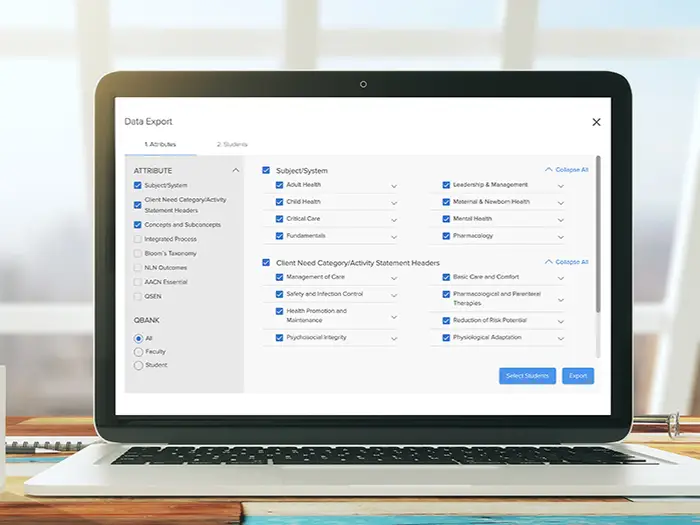What Is Competency-Based Education?
Competency-based education is a system of instruction that puts students at the center of the learning process and helps them connect theory to practice in a way that traditional methods often struggle to do. CBE involves regular feedback, assessment, self-reflection, and academic reporting. In nursing education, a successful competency-based program will produce students who demonstrate a strong understanding of the knowledge, self-perceptions, motivations, attitudes, and skills expected of them to provide safe and effective care.
Benefits of CBE in nursing education
The American Association of Colleges of Nursing (AACN) outlines several benefits for you and your students:
- CBE makes students responsible for their learning: You shift to more of a “coaching” role, which improves equity by serving diverse learners.
- CBE establishes objective benchmarks and expectations: Learning outcomes are measured against professional standards and competencies, eliminating potential bias across programs and assessors using different methods of instruction.
- CBE improves the quality of nursing education: CBE requires a detailed approach to course design and curriculum development that evolves over time. Internal motivation, collaboration, and continuous improvement are all needed to ensure optimal student growth.

Why Adopting Competency-Based Learning Matters
Many nursing programs will be required to shift to a competency-based model in 2025. New accreditation requirements outlined by the Commission on Collegiate Nursing Education (CCNE) highlight the importance of abiding by the 2021 AACN Essentials, which focuses heavily on CBE.
Tips for transitioning to a competency-based model
The idea of incorporating CBE into your program can be a daunting prospect, but you’re not alone. Proactively assess your program’s core instruction methods and how learning outcomes are measured by:
- Mapping your current curriculum to the new Essentials: Identify where you’re already providing learning experiences that address new competencies and note content gaps.
- Reviewing your learning activities: Analyze how your current learning activities promote and assess the achievement of desired learning outcomes and consider areas where updated or new activities may result in better student performance.
- Considering your program as a whole: Identify how your degree pathways align with CBE objectives and think about how areas that do not align might evolve to do so.
- Taking advantage of the AACN’s resources: The AACN offers Essentials resources and a curricular transition guide to answer your questions, connect you with leaders in nursing education, and offer best practices for creating an effective transition strategy.
How UWorld Nursing Can Help You Transition to a CBE Model
We developed a suite of multifaceted resources that promote CBE. Our products feature active-learning best practices and are driven by engaging video lessons, interactive exercises, targeted practice questions, and detailed rationales. Our content can help you:
Elevate learning outcomes
By focusing on active learning and student engagement, our products help students understand core competencies better, increase retention, and develop stronger clinical judgment skills. This begins with our easily digestible lecture videos. As students progress, they can apply what they just learned with NCLEX-style practice questions, then receive immediate feedback through visually rich rationales that explain why answer options are right or wrong.
Improve student assessment, participation, and feedback
Regular assessments and feedback are crucial to any successful CBE program. That’s why we give you access to a question bank you can use to create custom, automatically scored assignments. As your students complete their assignments, you can track their progress and performance through premade reports to help with remediation. You can also select questions to present in class and poll students for instant feedback. We suggest using this feature to develop in-class learning activities that further encourage engagement.
Enhance curriculum alignment
Aligning your curriculum to the latest professional standards and guidelines is paramount. Because our solutions are fully digital and date-stamped, you can be sure that the content your students receive is up-to-date and relevant. We cover the core learning objectives of each subject and include NGN case studies to prepare your students for the NCLEX. For administrators, we provide item-level reports that check whether your curriculum aligns with the AACN Essentials, QSEN competencies, and other standards.
Your Partner for a Competency-Based Future
We’re happy to help you reorganize your nursing program and redefine what it means to be an educator as competency-based learning becomes the industry standard. While aligning your program with a CBE model will take some effort, data shows that your students – and ultimately patients everywhere – will benefit greatly.






